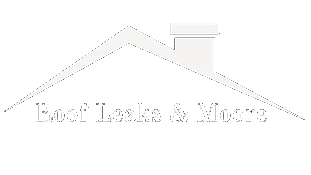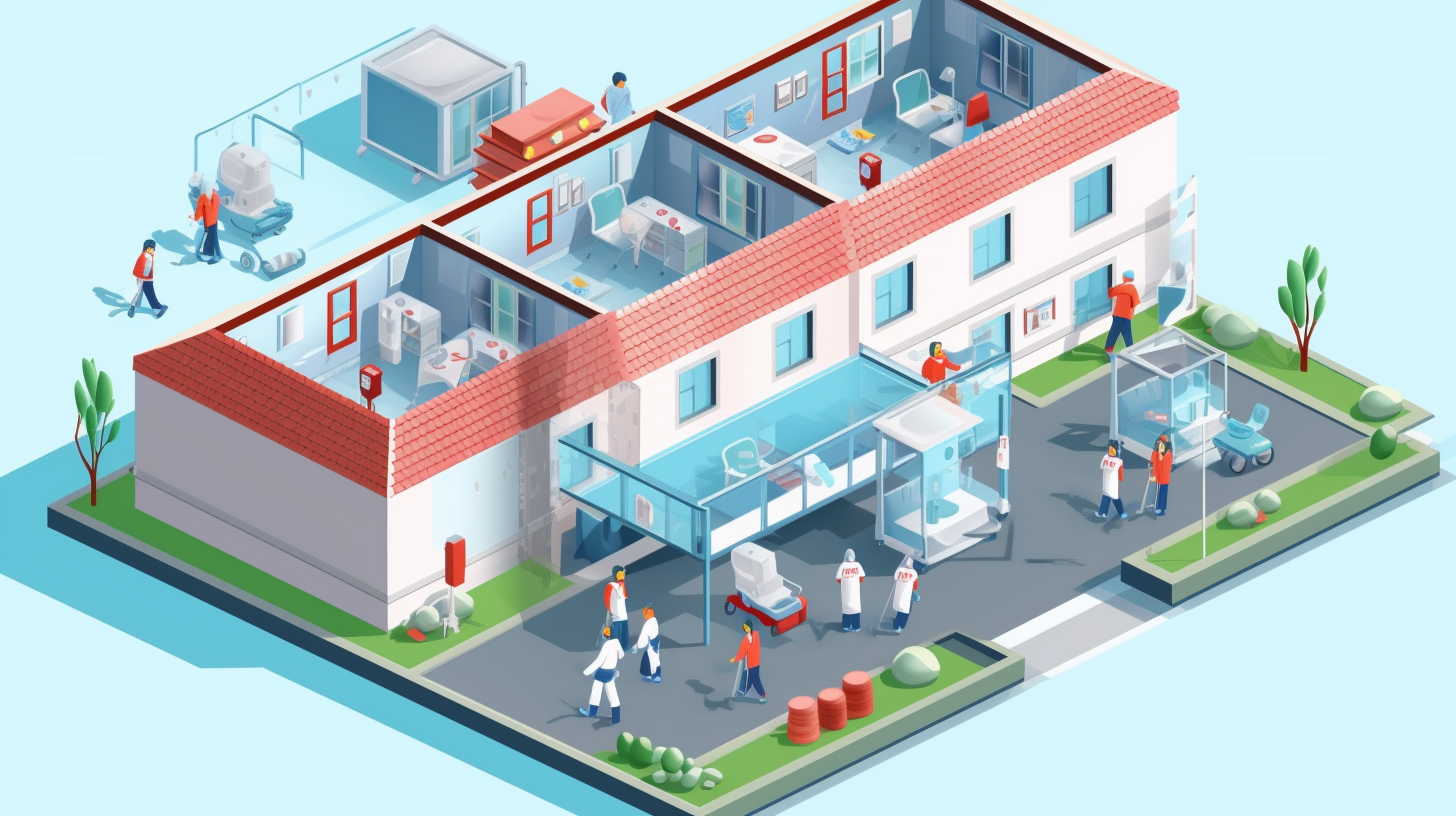Did you know that healthcare settings are at a higher risk of infection during construction and maintenance projects? According to the Centers for Disease Control and Prevention, healthcare facilities have a higher incidence of healthcare-associated infections (HAIs) compared to other settings.
This means that infection control measures are critical during any type of construction or repair work in healthcare facilities. The safety of patients and healthcare workers should always be a top priority during roof repairs and other maintenance projects in healthcare facilities.
In this article, we will discuss the importance of infection control measures during healthcare roof repairs, and provide strategies for mitigating the risk of infection. By following these guidelines, you can ensure that your healthcare facility is safe and secure for everyone involved.
Importance of Safety in Healthcare Settings
When it comes to healthcare settings, safety isn’t just important, it’s essential. In order to provide the best possible care to patients, creating protocols to ensure staff accountability for safety measures is crucial.
This means that every staff member, from doctors to custodial staff, must be trained on safety procedures and held accountable for implementing them in their daily work. Creating protocols goes beyond just training staff, it also involves regular inspections and evaluations to ensure that safety measures are being followed.
This includes everything from proper hand hygiene to using personal protective equipment when necessary. By prioritizing safety in healthcare settings, we can ensure that patients receive the highest level of care while minimizing the risk of accidents or infections.
With this in mind, it’s important to consider infection control measures during healthcare roof repairs, as even seemingly minor construction projects can pose a risk to patient safety.
Infection Control Measures
You can ensure a safer environment by implementing proper protocols for preventing the spread of germs and bacteria during healthcare roof repairs. One of the most critical infection control measures is to establish rigorous cleaning protocols that include disinfecting all surfaces, tools, and equipment before and after each use. This process helps eliminate any potential sources of contamination and reduces the risk of infection for both employees and patients.
To further enhance the effectiveness of your infection control measures, you should also ensure that all personnel follow the proper PPE requirements. This includes wearing appropriate gloves, masks, and gowns when handling contaminated materials or working in areas with a high risk of infection.
Additionally, it’s essential to provide ongoing training to all employees on the latest infection control techniques and protocols to ensure that they’re up-to-date with the latest best practices. By following these guidelines, you can create a safer environment for everyone involved and mitigate the risk of infection during healthcare roof repairs.
Mitigating the Risk of Infection
Mitigating the risk of spreading germs and bacteria during roof repairs is like navigating through a minefield, where one wrong move can have disastrous consequences for the entire healthcare facility. Contamination prevention is key, and this requires strict adherence to sanitation procedures.
To ensure that the work area is clean and free from any contaminants, the construction crew must follow stringent protocols. They must wear personal protective equipment (PPE) at all times and use disposable coveralls, gloves, and masks. They must also ensure that all equipment and tools are thoroughly disinfected before use and after completion of the work.
In addition to PPE and sanitation procedures, there are other measures that need to be taken to mitigate the risk of infection during healthcare roof repairs. The construction crew should avoid working during peak hours to minimize the risk of exposure to patients and staff. The work area should be cordoned off and clearly marked to prevent unauthorized access.
Furthermore, healthcare facility staff should be trained to recognize the signs of infection and report any concerns to the appropriate authorities. By taking these steps, the healthcare facility can minimize the risk of infection and keep the staff, patients, and visitors safe. With these measures in place, the healthcare facility can continue to provide quality care while the necessary repairs are being made.
Strategies for Keeping Healthcare Settings Safe
When it comes to keeping healthcare settings safe, there are several key strategies to consider.
First, you should focus on planning and preparation. This means taking the time to assess potential risks and develop protocols for addressing them.
Communication and coordination are also essential, as you need to ensure that everyone involved in the healthcare setting is aware of the risks and how to mitigate them.
Finally, training and education are critical components of any safety plan, as they help ensure that everyone knows what to do in the event of an emergency or outbreak.
By taking these steps, you can help keep your healthcare setting as safe as possible.
Planning and Preparation
Before starting the healthcare roof repairs, make sure your team has thoroughly planned and prepared for infection control measures to ensure the safety of patients and staff. This includes conducting a pre-construction assessment to identify potential infection control hazards and risks, such as airborne contaminants and dust. It’s important to select a contractor who has experience working in healthcare settings and is knowledgeable about infection control protocols. The contractor should have a clear understanding of the importance of minimizing disruptions to patient care and should be able to provide a detailed plan for how they will manage infection control during the repair process.
To help guide your planning and preparation, consider using the following table as a checklist for infection control measures:
| Infection Control Measure | Responsibility | Timeline | Documentation |
|---|---|---|---|
| Conduct pre-construction assessment | Facility management | Prior to project start | Assessment report |
| Select qualified contractor | Facility management | Prior to project start | Contractor selection documentation |
| Develop infection control plan | Contractor | Prior to project start | Infection control plan |
| Train staff on infection control measures | Contractor and facility management | Prior to project start and throughout project | Training documentation |
Effective planning and preparation are crucial for ensuring a safe and successful healthcare roof repair project. By conducting a pre-construction assessment, selecting a qualified contractor, developing an infection control plan, and training staff on infection control measures, you can help minimize the risk of infection and ensure the safety of patients and staff. Communication and coordination with all parties involved in the project will also be essential to ensure that infection control measures are being properly implemented.
Communication and Coordination
Now that the planning and preparation phase is complete, it’s time to move on to the next crucial step: communication and coordination. This phase involves effective communication with all parties involved in the healthcare roof repair project, including the construction team, healthcare staff, patients, and visitors.
Team collaboration is key during this phase, as it ensures that everyone is on the same page and understands their roles and responsibilities. Construction schedules should be carefully coordinated with healthcare staff to minimize disruption to patient care and ensure that infection control measures are being followed at all times.
Additionally, regular meetings between the construction team and healthcare staff should be held to address any concerns or issues that may arise during the project.
As we move forward in ensuring the safety and well-being of everyone involved in the healthcare roof repair project, the next important step is training and education.
Training and Education
To ensure the success of your healthcare roof repair project, it’s crucial to prioritize training and educating all individuals involved in the process.
Interactive training sessions should be conducted to educate your staff on the proper infection control measures to be followed during the repair process. The training sessions should be conducted in a way that is engaging, informative, and interactive. This will ensure that the staff retains the information and applies it in their day-to-day activities.
Continuing education is also an important aspect of the training process. Your staff should be provided with regular updates on the latest infection control practices and guidelines.
This will ensure that they are equipped with the necessary knowledge and skills to handle any challenges that may arise during the healthcare roof repair project. By prioritizing training and education, you can ensure that your staff is well-prepared to handle the task at hand, and that the project is completed safely and successfully.



